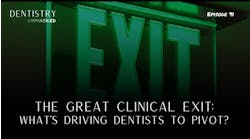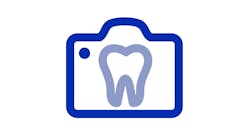Navigating the digital frontier: Transforming dentistry in the modern age
In the ever-evolving landscape of dentistry, the winds of change are blowing stronger than ever, propelled by the relentless force of digitalization. This revolution brings with it numerous opportunities and challenges that reshape our daily practices. As we traverse this transformative journey, it becomes imperative to share our experiences, learnings, and insights for the benefit of all who embark upon this path.
The journey into digital dentistry begins with a fundamental question: What do I want to achieve?
- Do I seek to streamline recordkeeping within the office, acquainting my team with intraoral scans, facial scans, and desktop scanners?
- Or perhaps I envision a scenario where I design in-house and outsource manufacturing, or vice versa?
- Alternatively, do I aim to integrate every facet of the process under one roof?
In addition to these questions, you should also ask yourself: Why do I want to pursue this? Is it to provide better dentistry, increase your income, save on lab costs, enhance quality control, or simply because of a passion for technology? Whatever your reasons, understanding them sets the stage for the subsequent decisions you’ll make.
Once you’ve established your goals and chosen your path, the focus shifts to logistical considerations. Assessing the necessary space and identifying the required equipment become essential. Equally crucial is the challenge of preparing your team for this transition. You might be surprised at the talent within your team—make them part of the decision-making process, and they will help you throughout. At the end of the day, it’s a great opportunity for them as well. Effective training and integration strategies are key to ensuring a smooth adaptation to the new technological landscape. Make sure to find good mentors who can guide you through the process.
Data collection: The foundation of digital dentistry
Among the many digital tools at our disposal, intraoral scanning stands out as a game changer. It not only facilitates precise digital impressions but also enhances patient communication and engagement (figure 1). By projecting scans onto a screen, clinicians can visually discuss treatment plans, fostering deeper understanding and cooperation from patients (figure 2). It’s crucial in this step to master the scan path to ensure accurate representations of the oral cavity. Each intraoral scanner has a specific scanning technique, and if this path is not followed correctly, inaccurate data can result, which leads to fitting problems in the final restoration.
Intraoral scans, however, have their limitations, particularly concerning muscle movement capture, which is vital for procedures such as denture fabrication. Nonetheless, digital solutions exist to address these challenges, ensuring comprehensive patient care.
Desktop scanners emerge as indispensable tools here, especially for capturing detailed impressions in cases involving dentures and partials. Their wider field of view minimizes errors and maximizes accuracy, offering a complementary solution to intraoral scans.
Facial scans and photography also play pivotal roles in achieving optimal treatment outcomes (figure 3).
While the investment in facial scanning technology may seem daunting, its potential to revolutionize treatment planning and esthetic outcomes cannot be overstated. Traditional photography remains a big asset, providing essential insights and facilitating seamless communication with designers.
These tools are essential for providing accurate data and enhancing communication with the lab. It’s also worth pointing out that if your practice focuses on implants or you are planning to tackle this area, having a CBCT (cone beam computed tomography) is very important for these types of procedures.
Design: Crafting your digital blueprint
In today’s fast-paced and technologically advanced dental industry, selecting the right CAD/CAM software is crucial. This choice affects the precision and efficiency of dental restorations, shapes your practice’s workflow, and ultimately ensures the delivery of high-quality dental services to your patients. To make an informed decision about which software is best for your dental office, consider the following factors: practice focus, budget, user experience, and technical support.
A hands-on trial and consultation with software providers can also be beneficial to determine which software best aligns with your office’s objectives. Carefully evaluate your practice’s specific needs and budget constraints before making a decision.
Another crucial aspect to consider is the availability of skilled designers. While finding experienced designers can be challenging due to the relatively new nature of digital dentistry, numerous training opportunities are available for your team to cultivate these essential skills and create opportunities for themselves.
Manufacturing: Bringing designs to life
The journey doesn’t end with software; it extends to manufacturing considerations. Whether opting to manufacture in-house or outsource, decisions regarding materials, equipment, and space allocation must be made judiciously.
In manufacturing, you have two primary methods: printing and milling (or a combination of both). Printers involve additive manufacturing, while milling employs subtractive methods. 3D printing (figure 4) shows potential—especially for temporary solutions—but the long-term durability of printed restorations is still under study. On the other hand, milling offers unmatched precision, esthetics, and final restoration quality. If the budget permits, consider both methods. If milling is financially challenging, investing in a high-quality 3D printer and outsourcing milling can be a viable solution.
Prioritize materials of superior quality, which will make this process easier, reduce the need for remakes, and ensure the final product meets both esthetic and fitting standards. In my experience, Ivotion dentures stand out for their exceptional quality, esthetics, and durability (figure 5). When observing patients three or four years postdelivery, I notice minimal wear compared to traditional dentures, which is invaluable. Additionally, the multilayer properties of Zirconia Prime offer an unparalleled combination of beauty and strength (figure 6). This material allows for precise control over translucency and opacity, making it suitable for a range of cases—from full-arch restorations to single crowns and bridges. The confidence in knowing that the shade and esthetics will be perfect at delivery makes Zirconia Prime one of my favorite materials.
Conclusion
The success of these endeavors depends on the expertise of your team. Investing in training and nurturing talent is essential to harness the full potential of digital dentistry. With dedication and perseverance, you can navigate this digital frontier, transforming your practice and delivering unparalleled quality of care to your patients.
The journey into digital dentistry is rife with challenges and opportunities. By sharing our experiences and insights, we can collectively navigate this uncharted territory, paving the way for a brighter future in dental care. Embrace the change, empower your team, and embark on this transformative journey with confidence, knowing that the destination promises nothing short of excellence.
Editor's note: The article appeared in the September 2024 print edition of Dental Economics magazine. Dentists in North America are eligible for a complimentary print subscription. Sign up here.
















